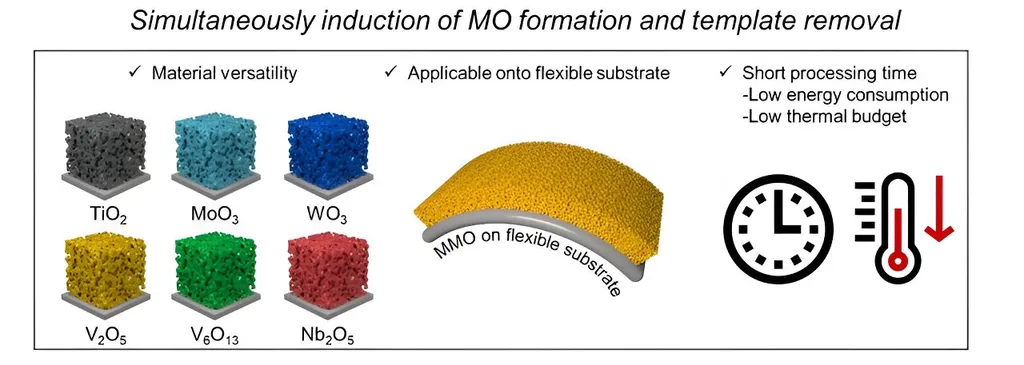In a significant stride towards advancing materials science, researchers have unveiled a novel class of medium-entropy pyrochlore oxides that could revolutionize the energy sector. The study, led by Gaius Cherian Mathew from the Department of Materials Science and Engineering at the National Institute of Technology Calicut in Kerala, India, introduces five new entropy-stabilized oxides with unique properties stemming from their disordered atomic structures.
The research, published in the journal *Materials Research Express* (which translates to *Expressions of Materials Research* in English), focuses on the development and characterization of these medium-entropy pyrochlore oxides (MEPOs). These materials are composed of a combination of four rare-earth elements and a transition metal, specifically hafnium (Hf). The general structure of these oxides is 4RE₂TM₂O₇, where RE represents the rare-earth elements and TM stands for the transition metal.
The team synthesized these oxides using a solution combustion method with urea as the fuel. The resulting materials exhibited remarkable phase stability, maintaining their structural integrity even at high calcination temperatures of up to 1600°C. This stability is crucial for applications in high-temperature environments, such as those found in energy generation and storage systems.
One of the most intriguing findings of the study is the enhanced optical and mechanical properties of these MEPOs. The oxides displayed a narrower band gap compared to individual rare-earth hafnates, a result of the severe lattice distortion effect. This property could be particularly beneficial for applications in photovoltaics and other energy-harvesting technologies.
Moreover, the oxides exhibited excellent infrared (IR) absorption in the range of 800–2000 nm, which is a desirable trait for various optical and sensing applications. The MEPO variant known as MEPO-2, with the highest size disorder of 3.66%, demonstrated exceptional mechanical properties. It achieved a hardness of 11.59 GPa and a fracture toughness of 3.68 MPa·m^(1/2), representing significant improvements of 18.15% and 62.11%, respectively, compared to La₂Hf₂O₇.
“These findings open up new avenues for the design and development of advanced materials with tailored properties for specific applications,” said Mathew. “The unique combination of optical and mechanical properties in these medium-entropy pyrochlore oxides makes them highly promising for the energy sector.”
The research highlights the potential of entropy-stabilized oxides to address the growing demand for materials with enhanced performance and durability. As the energy sector continues to evolve, the development of such advanced materials could play a pivotal role in improving the efficiency and reliability of energy systems.
“This study not only advances our understanding of medium-entropy oxides but also paves the way for future innovations in materials science,” added Mathew. “The insights gained from this research could lead to the development of new materials with even more remarkable properties, further expanding the horizons of what is possible in the field of energy and beyond.”
The findings of this research could have far-reaching implications for the energy sector, particularly in areas such as solar energy conversion, thermal management, and advanced manufacturing. By harnessing the unique properties of these medium-entropy pyrochlore oxides, researchers and engineers can develop more efficient and durable materials for a wide range of applications, ultimately contributing to a more sustainable and energy-efficient future.

